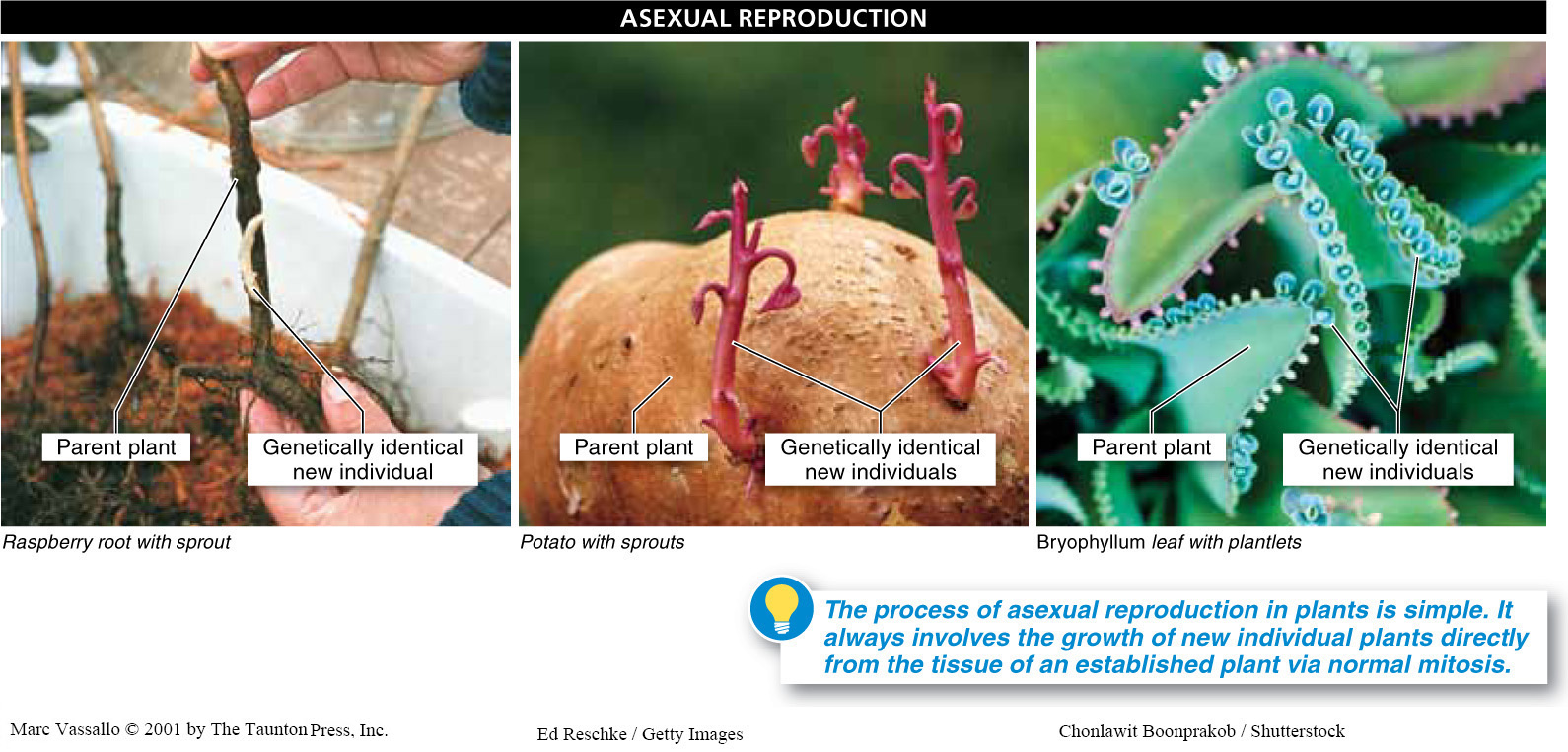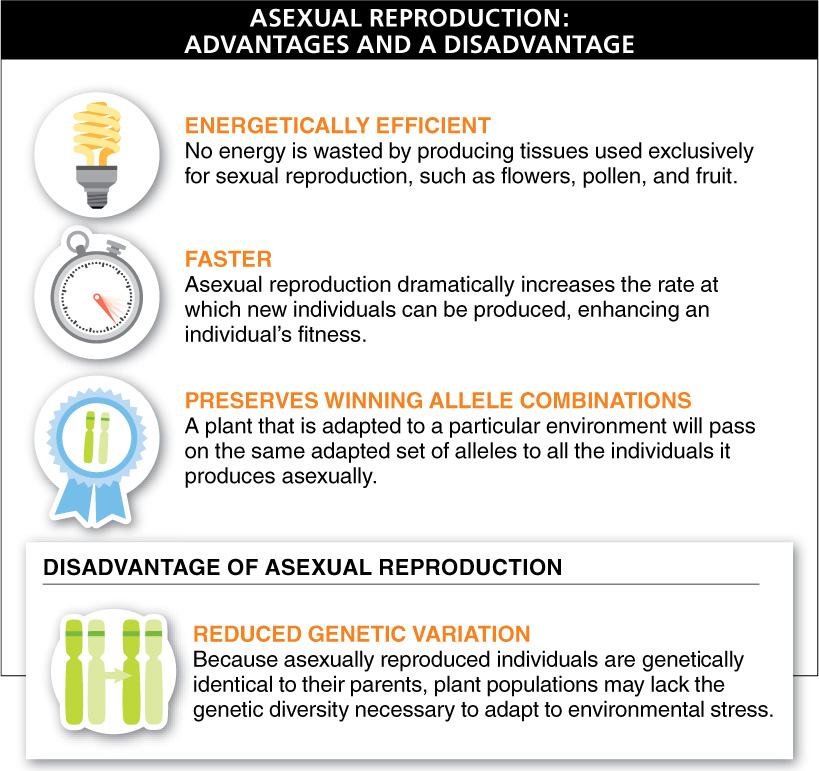Cloning isn’t new. Gardeners have been doing it for centuries. And before that, plants were doing it for millennia—
Most of the trees or shrubs we see in gardens are, in fact, the result of asexual reproduction. So, too, are nearly all houseplants purchased from nurseries. How does asexual reproduction in plants occur? The process is simple. New individual plants grow directly from the tissue of established plants through mitosis. There is no meiosis to generate gametes, and there is no fertilization of one gamete by another. Asexual reproduction is also called vegetative reproduction, because it starts with a vegetative structure of the plant (such as a stem or root or leaf), not involved in sexual reproduction, which becomes separated from the parent plant and continues to grow to form a new individual.
Raspberry plants, for example, can be propagated by cutting sprouts from their roots (FIGURE 18-3). And potato plants can be generated from their underground storage stems (that is, from the potato itself). Thus, a new potato plant can be generated just by planting a potato and waiting for it to sprout into a genetically identical individual. We consider the new plant and the “parent” plant distinct individuals because they have become separated and can grow and function independent of one another. In a group of plant species called Bryophyllum small “plantlets” grow right along the edges of the leaves, eventually dropping to the soil, taking root, and growing as independent plants—

728
The critical feature in every case of asexual reproduction is that the bit of the plant that is used to start a new individual must have some undifferentiated cells. Such cells—
The ability to reproduce asexually is an evolutionary adaptation that helps plants overcome the fact that they are rooted in the ground and cannot easily seek out sexual partners. By removing the need to locate a suitable partner, asexual reproduction confers important benefits. It is not a perfect solution, however. In most situations, there is a critical disadvantage to asexual reproduction. The advantages and disadvantage can be summarized quite simply.
Advantages of Asexual Reproduction There are three main advantages to reproducing asexually (FIGURE 18-4).

- 1. It is energetically efficient. No energy is wasted in producing flowers, pollen, and fruits—
plant tissues used exclusively for reproduction. Instead, the plant’s energy can be invested in producing roots, support and nutrient- transporting tissues, leaves, and other vegetative matter for growth and increased photosynthetic capacity. - 2. It is faster. Participation of another individual is not required, nor is a means of bringing together the male and female gametes. As a result, new individuals can be produced at a much faster rate, which enhances an individual’s reproductive success and fitness.
- 3. It preserves winning allele combinations. If a plant is well adapted to a particular environment, all the individuals it produces by asexual reproduction will carry the same well-
adapted set of alleles and are likely to flourish just as the parent plant did.
729
Disadvantage of Asexual Reproduction Although it has some advantages, asexual reproduction has one huge disadvantage relative to sexual reproduction: it leads to no new genetic variation among the offspring. Asexually reproduced individuals are identical to their parents (with the rare exception of any mutations that might occur). If the environment is changing—
We turn next to how plants produce genetically varied offspring through sexual reproduction.
TAKE-HOME MESSAGE 18.2
Many plants can reproduce asexually. This process involves the growth of new, individual plants directly from the tissue of an established plant through mitosis. The new individual is genetically identical to the individual from which it was produced. Asexual reproduction can be energetically efficient and fast and can preserve successful genetic combinations, but it also has the important disadvantage that it does not lead to genetic variability among an individual’s offspring.
If asexual reproduction is faster and more energetically efficient than sexual reproduction, why does sexual reproduction persist in so many plant species?
Sexual reproduction produces genetically variable offspring, whereas asexual reproduction does not. Populations with greater genetic variation are better able to adapt to a changing environment.